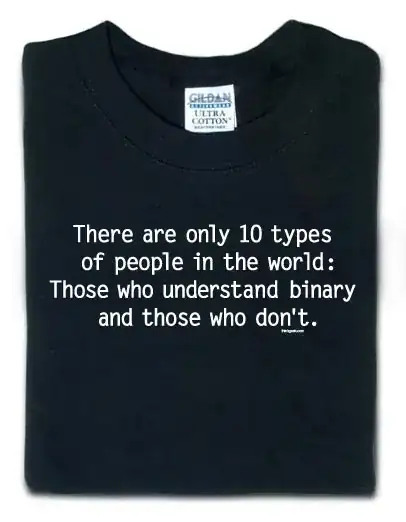So in most languages one reads "1111" as "one thousand, one hundred, ten and one" (though in English we use the dozenal word "eleven" instead of "ten and one"). One may also read it as “one, one, one, one” but that is not the number's proper name, but merely a list of its numeral digits. One could read this number as “fifteen”, but that is properly a decimal name for it (five tens), and it gets confusing when one starts reading “1010 0100” as “one hundred sixty two”, which names the number by its decimal representation rather than its binary representation. Both digit reading or decimal naming seem wrong. A better method would be to name numbers using the names of the digit place holders and the name of the quantities these represent (which is exactly how we do it with decimal numbers).
In decimal, we have special names for the powers of ten, which become the name of the digit's placeholder in a numeral. In British English these are:
one (unit), ten, hundred, thousand, ten-thousand, hundred-thousand;
million, ten-million, hundred-million, thousand million, ten-thousand-million, hundred-thousand-million;
billion, ten-billion, hundred-billion, thousand-billion, etc.
trillion, etc.
quadrillion, etc.
As one can easily see, the British naming is systematic, cycling every six digits.
Just as it is important for number literacy that a student not think of the numeral 1 in decimal 6173 as representing one unit, but as representing a hundred units, so the student looking at the 1 in binary 0100 should not think of it as representing one unit but as representing eight units.
Once I teach my students how to read binary numerals using place-holder names, they begin to really understand the number that the numeral represents. So I teach my students that in binary, we can name the place of digits in the same systematic way using existing binary names, and thus produce appropriate binary names for the numerals:
one (unit), two, four, eight, nibble, two-nibble, four-nibble, eight-nibble;
byte, two-byte, four-byte, eight-byte, nibble-byte, two-nibble-byte, four-nibble-byte, eight-nibble-byte;
bibyte, two-bibyte, four-bibyte, eight-bibyte, nibble-bibyte, two-nibble-bibyte, four-nibble-bibyte, eight-nibble-bibyte;
tribyte, two-tribite, etc.
quadrabyte, etc.
Note that since binary does not have numerals 2, 4, or 8, the words "two", "four", and "eight" always indicate the digit's place and quantity.
This naming is systematic, cycling every eight digits
Here is an example of the convention using a binary numeral with twenty four bits (I divide the bytes in half with a comma to make it easier to identify the nibbles):
0001,0100 1111,1111 0110,1001
“One nibble; and four bibytes,
Eight-, four-, two-, and one-nibble; and eight, four, two, and one bytes,
Four- and two-nibble; and eight and one (units).”
This same system can be also used in quaternary, paired down so it cycles every four digits:
units, fours, nibbles, four-nibbles,
bytes, four-bytes, nibble-bytes, four-nibble-bytes,
bibytes, four-bibytes, nibble-bibytes, four-nibble-bibytes,
tribytes, etc.
quadrabytes, etc.
Here is the quaternary convention using twenty four bits: 0110 3333 1221
“One-nibble and four bibytes;
Three fours- and three nibbles and three- fours and three bytes;
Four- and two nibbles; and two fours and one (units).”
(Note: since the numeral 4 is not used in quaternary, the word “four” always indicates a decimal place.)
(Note: Since the quaternary numeral “1111 1111” uses only the digit 1, it can be expressed in binary using alternate 0s and 1s, namely “01010101 01010101 01010101.” These two numerals are named exactly the same:
“Four and one nibbles, four and one bibytes;
four and one nibbles, four and one bytes;
four and one nibbles, four and one (units).”)
This system can also be used in hexadecimal, cycling every two digits:
one (unit), nibble,
byte, nibble-byte,
bibyte, nibble-bibyte,
tribyte, etc.
quadrabyte, etc.
The hexadecimal numeral “14 FF A9” is pronounced:
“One nibble and four bibytes;
Eff nibbles and Eff bytes;
Ace nibbles and nine (units).”
NB: We say “Ace” instead of “a” so that the numeral A (one more than nine) is not confused with the indefinite article. Thus “Ace-nibble” equals decimal one-hundred sixty; but “a nibble” is “one nibble”, i.e. decimal sixteen.
The hexadecimal numeral “11 11 11” is pronounced exactly the same as the quaternary numeral “0101 0101 0101” and the binary numeral “00010001 00010001 00010001”, namely:
“One nibble and one bibytes; one nibble and one bytes; and one nibble and one (units).”

10"ten", what would you call1F? – Sep 19 '11 at 10:17